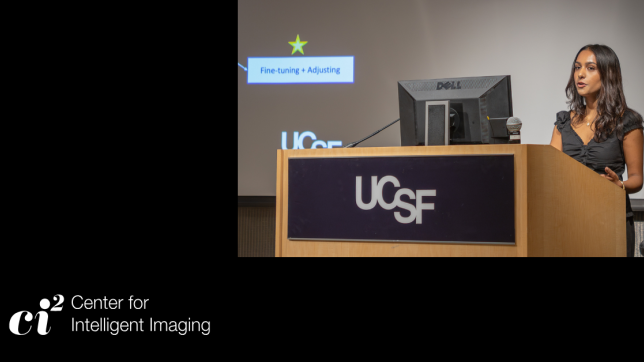In the ever-evolving landscape of medical technology, innovation is the key to improving patient care and outcomes. The field of radiology is no exception, and groundbreaking developments that have the potential to revolutionize the way we approach medical imaging and surgical planning are underway. Dr. Jesse Courtier, Chief of Pediatric Radiology at UCSF Benioff Children’s Hospital and Clinical Professor at UCSF Department of Radiology & Biomedical Imaging, is investigating the application of augmented reality in medical imaging. He shares his insights into the exciting projects and initiatives within the Transformational Technologies Pillar at the UCSF Center for Intelligent Imaging (ci2).
From Idea to Application
Dr. Courtier emphasizes that the core goal of the Transformational Technologies Pillar is to bridge the gap between research conducted within ci² and its practical application in clinical settings. This interdisciplinary group of researchers and medical professionals, including pediatric radiologists, interventional radiologists, and experts from various fields, collaborates to take innovative ideas from concepts to tangible solutions that can benefit patients.
Enhancing Efficiency and Quality: Using Machine Learning to Create 3D Models
Traditional methods of creating 3D models from CT scans are time-consuming and labor-intensive, “The ci2 group looked into how we could improve the process and speed it up,” notes Dr. Courtier. One of the most notable aspects involves the use of machine learning to create 3D models from CT scans, significantly impacting pediatric patient care. Dr. Courtier adds, “…it produces a higher quality model by doing it with this method, which then leads to a higher quality ability to preoperative plan or educate the patient.” With the integration of machine learning, the process has been dramatically accelerated. Dr. Courtier's team has reduced this process from nearly 40 minutes to just 120 seconds using machine learning, making it a practical tool for pediatric surgeons. This efficiency not only saves time but also opens up new possibilities.
Dr. Courtier explains that these 3D models offer a truer representation of the CT scan compared to manual methods. The accuracy of these models is crucial for surgical planning and patient education. One of the key projects involves utilizing machine learning to create 3D models from CT scans, which can be used for patient and parent education, as well as pre-surgical planning. Dr. Courtier highlights the direct correlation between patient understanding and compliance, leading to reduced anxiety and improved adherence to treatment plans. This innovation has the potential to revolutionize patient education.
The Importance of AI and AR in Radiology
The incorporation of artificial intelligence (AI), augmented reality (AR) and machine learning into radiology is not just a trend; it is the future of the field. Dr. Courtier emphasizes that radiologists are actively driving the integration of these technologies into their workflows. “It allows us to have our clinical input to make sure it's being applied in the right way with the right tools being used in the right setting,” shares Dr. Courtier. Rather than being passive recipients, “We've been very proactive in using machine learning,” shares Dr. Courtier, ensuring that AI and machine learning are applied in ways that enhance clinical practice. The goal is to make radiology more efficient, allowing radiologists to focus on higher-level tasks while streamlining routine processes.
Unique Collaborative Initiatives
While Dr. Courtier is a pediatric radiologist, and the initial key project focused on pediatric radiology, the tools and techniques developed in UCSF ci2’s Transformational Technology pillar are not limited to pediatric patients. “The tools that we're developing can be applied across the spectrum of pediatric and adult care,” Dr. Courtier explains. The same anxieties and questions that arise in pediatric care also exist in adult care, making these innovations applicable across the spectrum of medical practice.
Future Goals and Implementation
Looking ahead, the Transformational Technologies Pillar is poised to expand its impact. Dr. Courtier highlights the importance of implementing these technologies in clinical settings. “We're excited to embark on more collaborations. We've got a lot of exciting areas that we're focusing on and that we think can be really impactful for patients,” shares. Dr. Courtier. The innovations in pediatric radiology serve as a stepping stone to broader applications, addressing anxieties, improving patient understanding, and aiding surgical planning for patients of all ages.
Dr. Courtier's insights shed light on the exciting and transformative developments occurring in the field of pediatric radiology. The work being done at UCSF's ci² Transformational Technologies Pillar exemplifies the power of collaboration between medical professionals and researchers to harness the potential of AI, AR and machine learning for the betterment of patient care. As these technologies continue to evolve, they promise to revolutionize health care, making it more patient-centric, efficient and effective.



